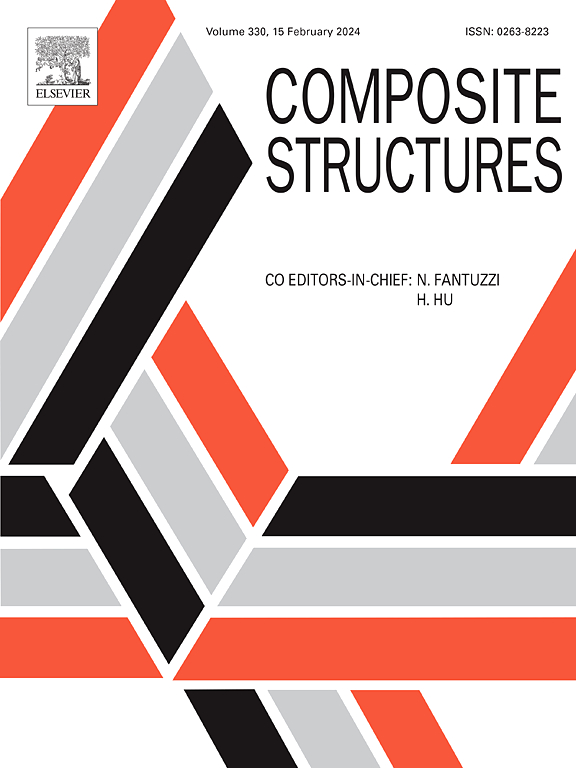Static behavior of multilayered magneto-electro-elastic doubly curved spherical shells: A new analytical 3D solution
IF 7.1
2区 材料科学
Q1 MATERIALS SCIENCE, COMPOSITES
引用次数: 0
Abstract
In this paper a new formalism generalizing the well-known Stroh formalism is developed to predict the static response of multilayered magneto-electro-elastic (MEE) doubly curved spherical shells under simply supported lateral edges boundary conditions. The proposed approach can be reduced to the multilayered straight plate approach by tending the curvature radius to infinity and using the Taylor’s series expansion. The solution is derived in each layer of the shell and the eigenvalues and eigen vectors problem are then obtained. After solving the resulting eigenvalues and eigen vectors problem, the solution is propagated from the bottom layer to the top layer of the multilayered shell utilizing the elaborated propagator matrix method. Several benchmarks’ results have been carried out using the piezoelectric (PE) material BaTiO3 and piezomagnetic (PM) material CoFe2O4. According to those results, the stacking sequences and the kind of loading widely influence the bending responses of the multilayered MEE spherical shells.
多层磁-电弹性双弯曲球壳的静态行为:一种新的三维解析解
本文提出了一种新的形式,推广了著名的Stroh形式来预测单层磁电弹性(MEE)双弯曲球壳在简支侧边边界条件下的静态响应。将曲率半径趋于无穷大,利用泰勒级数展开,可将该方法简化为多层直板方法。在壳层的每一层上推导出解,得到特征值和特征向量问题。在求解得到的特征值和特征向量问题后,利用详细的传播子矩阵方法将解从多层壳体的底层传播到顶层。使用压电(PE)材料BaTiO3和压磁(PM)材料CoFe2O4进行了几个基准测试结果。结果表明,叠层顺序和载荷类型对多层MEE球壳的弯曲响应有较大的影响。
本文章由计算机程序翻译,如有差异,请以英文原文为准。
求助全文
约1分钟内获得全文
求助全文
来源期刊

Composite Structures
工程技术-材料科学:复合
CiteScore
12.00
自引率
12.70%
发文量
1246
审稿时长
78 days
期刊介绍:
The past few decades have seen outstanding advances in the use of composite materials in structural applications. There can be little doubt that, within engineering circles, composites have revolutionised traditional design concepts and made possible an unparalleled range of new and exciting possibilities as viable materials for construction. Composite Structures, an International Journal, disseminates knowledge between users, manufacturers, designers and researchers involved in structures or structural components manufactured using composite materials.
The journal publishes papers which contribute to knowledge in the use of composite materials in engineering structures. Papers deal with design, research and development studies, experimental investigations, theoretical analysis and fabrication techniques relevant to the application of composites in load-bearing components for assemblies, ranging from individual components such as plates and shells to complete composite structures.
 求助内容:
求助内容: 应助结果提醒方式:
应助结果提醒方式:


